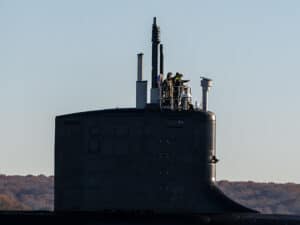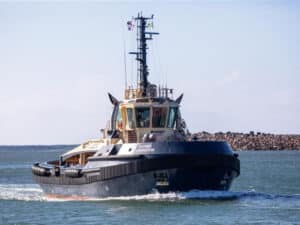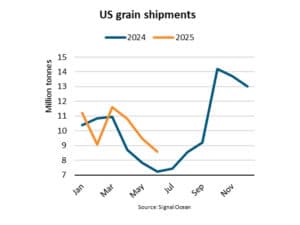
Great Lakes dredging crisis tops carriers’ agenda
Written by Nick Blenkey JANUARY 23, 2013 — The Lake Carriers’ Association says that the dredging crisis on the Great Lakes will again dominate its efforts in 2013. The Lake Carriers’ Association, which represents 17 American companies that operate 57 U.S.-flag vessels on the Great Lakes, has just released its 2012 Annual Report. It shows that inadequate dredging took a real toll on Great Lakes shipping in 2012.
JANUARY 23, 2013 — The Lake Carriers’ Association says that the dredging crisis on the Great Lakes will again dominate its efforts in 2013. The Lake Carriers’ Association, which represents 17 American companies that operate 57 U.S.-flag vessels on the Great Lakes, has just released its 2012 Annual Report. It shows that inadequate dredging took a real toll on Great Lakes shipping in 2012.
“The drought has pushed water levels on Lake Michigan and Huron to record lows,” the Association noted. “The water level in the St. Marys River also declined as 2012 wore on; by year’s end ships were loading to less than 26 feet. In 1997, the last period of high water, ships routinely locked through the Soo drafting 28 feet or more. That loss of draft cost some ships more than 10,000 tons of cargo on their final voyages of 2012.”
LCA hailed the transportation bill passed last June that declared “It is the sense of Congress that the Administration should request full use of the Harbor Maintenance Trust Fund (“HMTF”) for operating and maintaining the navigation channels of the United States” and that the amounts in the HMTF should be fully expended to operate and maintain ports and waterways.
The HMTF has a surplus of $7 billion because it typically spends only one of every two tax dollars it collects for dredging on dredging. It is estimated the 17 million cubic yards of sediment that clog the Great Lakes Navigation System could be removed for approximately $200 million, or just 2 percent of the HMTF surplus.
Legislation requiring the HMTF to spend what it takes in for dredging on dredging received broad support in the 112th Congress and LCA noted that most of the legislators who co-sponsored the House and Senate bills have returned to Washington in 2013.
Key among legislators who are working to end the dredging crisis is Senator Carl Levin (D-MI).
While the dredging crisis is LCA’s top priority, the Association is also focused on uniform Federal regulations governing ballast water. The Association is concerned that since states can, and have, added their own provisions to the EPA’s Vessel General Permit, there is a patchwork of differing requirements on the Great Lakes.
Another goal is moving forward with the second Poe-sized lock at Sault Ste. Marie, Michigan. Congress authorized twinning the Poe Lock in 2007, but a flawed benefit/cost analysis has stalled the project. At the behest of Senator Debbie Stabenow (D-MI), a new assessment is underway.
LCA continues to work to bolster the U.S. Coast Guard’s icebreaking resources, and as a result, an East Coast icebreaker has again been assigned to the Lakes for the winter of 2012/2013.
The association remains firmly committed to the Jones Act and its requirement that cargo moving between U.S. ports be carried in vessels that are U.S.-crewed, U.S.-built, and U.S.-owned.





Leave a Reply
You must be logged in to post a comment.